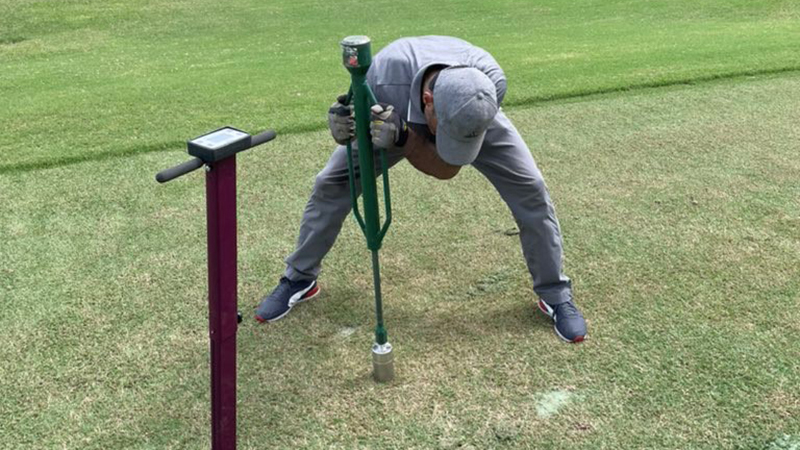
Turfgrass is a $14.3 billion business in Florida, covering 3.9 million acres statewide. Much of that acreage also is susceptible to damage from pests, such as nematodes and fungal diseases. One university researcher is focused on making it more economical for turf managers to control such pests.
"Sting and root-knot nematodes are major pests of turfgrass in the southern United States," said Abolfazl Hajihassani, a University of Florida scientist at the Institute of Food and Agricultural Sciences, in a UF news release. "The problem lies in that the combination of pests and diseases affect the growth and quality of the turfgrass. Management tools rely mainly on a limited number of expensive chemical fumigants and nematicides."
 Hajihassani (right), an assistant professor at UF/IFAS Fort Lauderdale Research and Education Center is the principal investigator on a $471,201 grant awarded by the U.S. Department of Agriculture's National Institute of Food and Agriculture.
Hajihassani (right), an assistant professor at UF/IFAS Fort Lauderdale Research and Education Center is the principal investigator on a $471,201 grant awarded by the U.S. Department of Agriculture's National Institute of Food and Agriculture.
During the next three years, Hajihassani will lead a team of UF/IFAS and USDA scientists in an effort to develop cost-effective methods for managing these pests and diseases. They believe the research will benefit the turfgrass industry in Florida, Georgia and other parts of the South.
"Our aim is to provide economic relief to growers, homeowners, parks and recreation turf managers, golf course superintendents, commercial industries and promote economic and environmental sustainability in the turfgrass industry," Hajihassani said.
Healthy lawns reduce soil erosion, filter stormwater runoff, cool the air and reduce glare and noise. They also effectively filter and trap sediment and pollutants that potentially contaminate surface waters and groundwater.
Nematodes are microscopic roundworms that live in the soil. While most soil nematodes are beneficial because they feed on bacteria, fungi or other microscopic soil organisms resulting in improved soil health, others feed on plant tissues, destroying lawns by feeding on or inside of roots.
Damaging the roots reduces the ability of the grass to obtain water and nutrients of the soil. Symptoms to watch out for include yellowing, wilting, browning, thinning producing patches of turfgrass and even death.
For the study, the team will conduct monthly samplings from five locations located throughout the southern tier of Florida. Four of the sites are golf courses where nematodes are prevalent to monitor population changes of these pests. The fifth location is the turfgrass testing field at UF/IFAS FLREC.
"The idea is to determine when nematodes are at the highest population near the top surface of the soil so that the nematodes can be better exposed to nematicides which in turn result in reduced population and turf damage," said Hajihassani.
Seeking biological solutions to suppress the population of nematodes and fungal disease is another objective of the research.
Finally, the team will evaluate the economic profitability of the developed practices and implement Extension and outreach activities.
"We are trying," Hajihassani said, "to detect fungal and bacterial secondary metabolites with the ability to control root-knot and sting nematodes and fungal diseases of turf."

